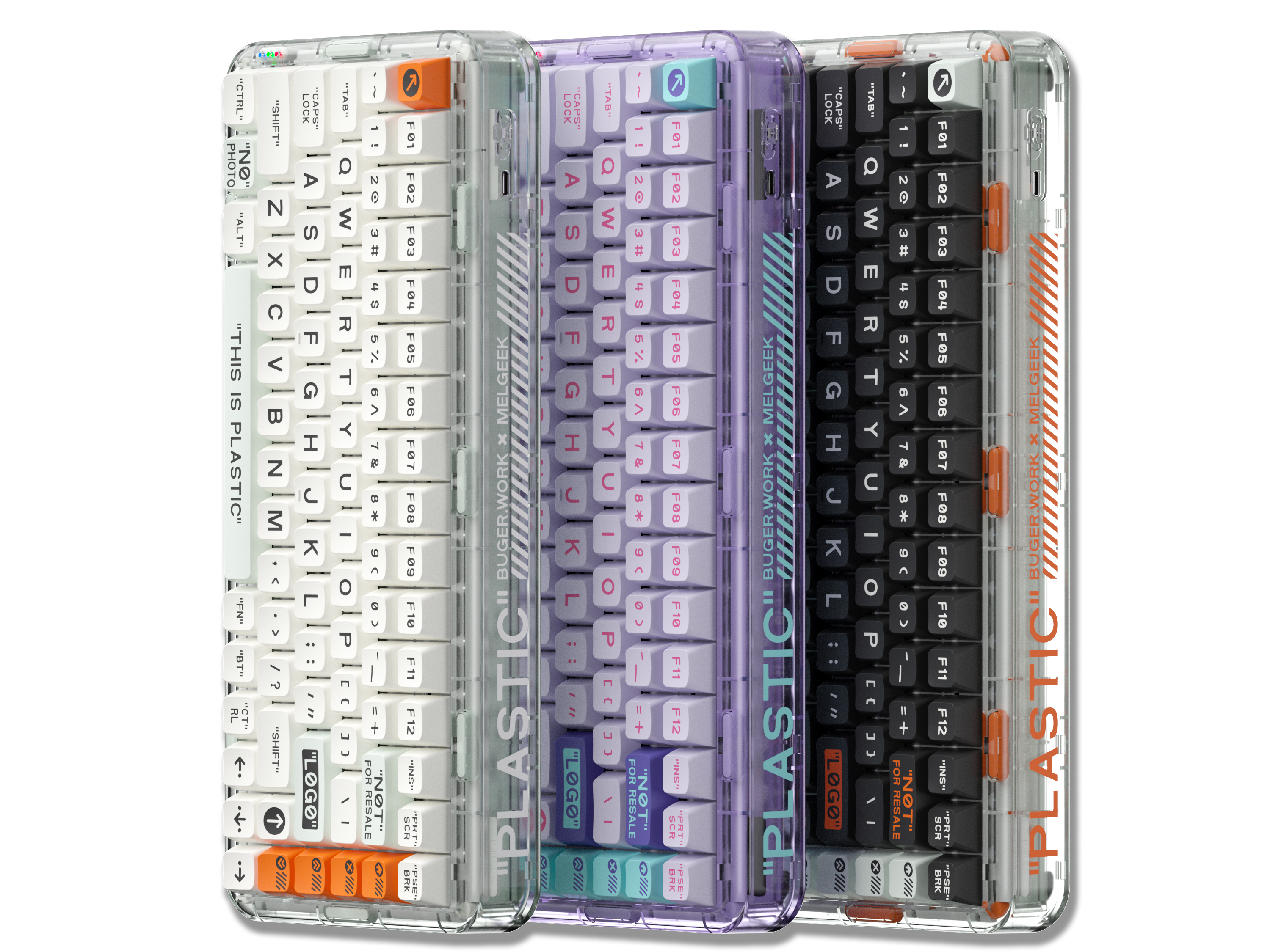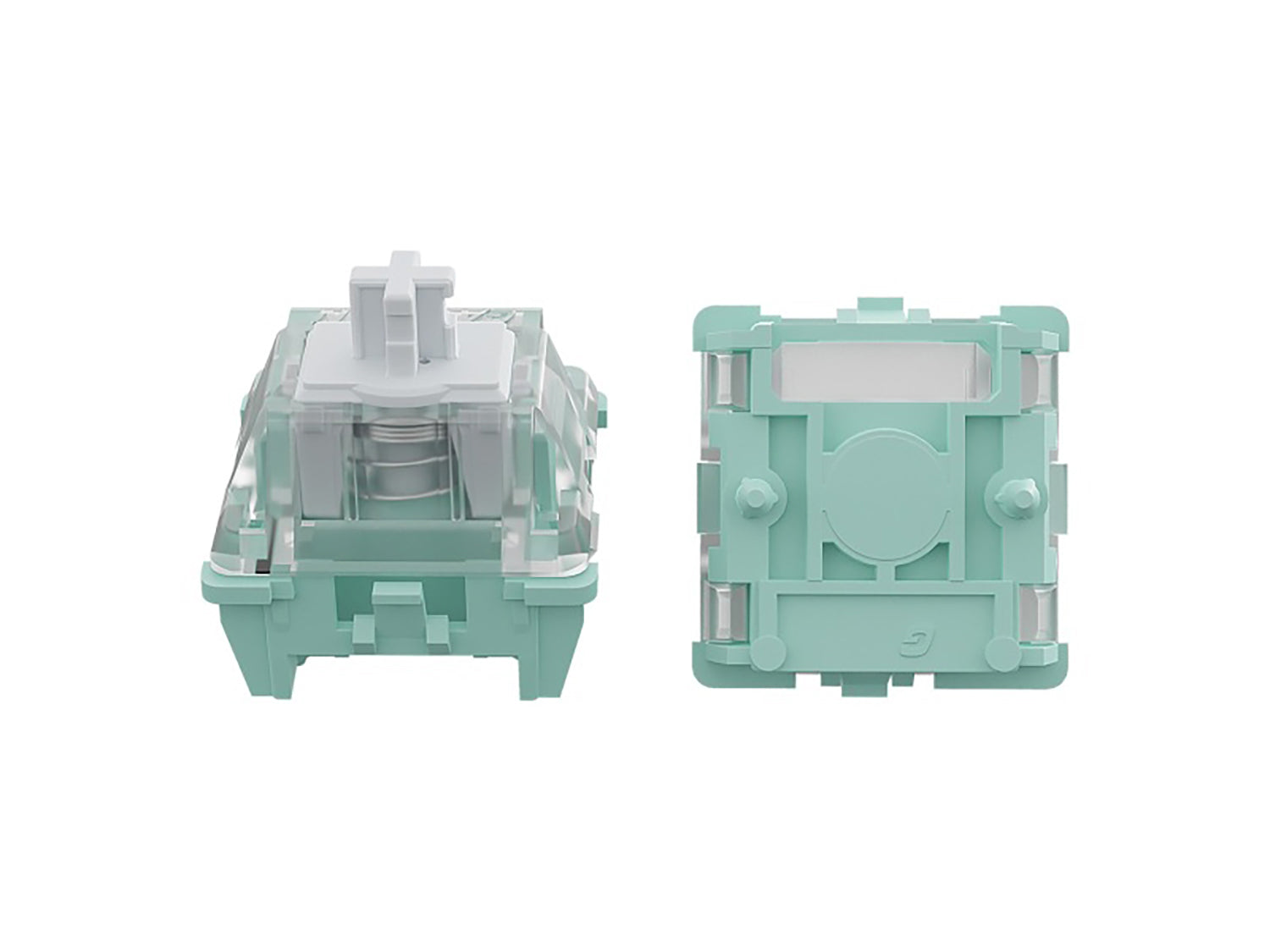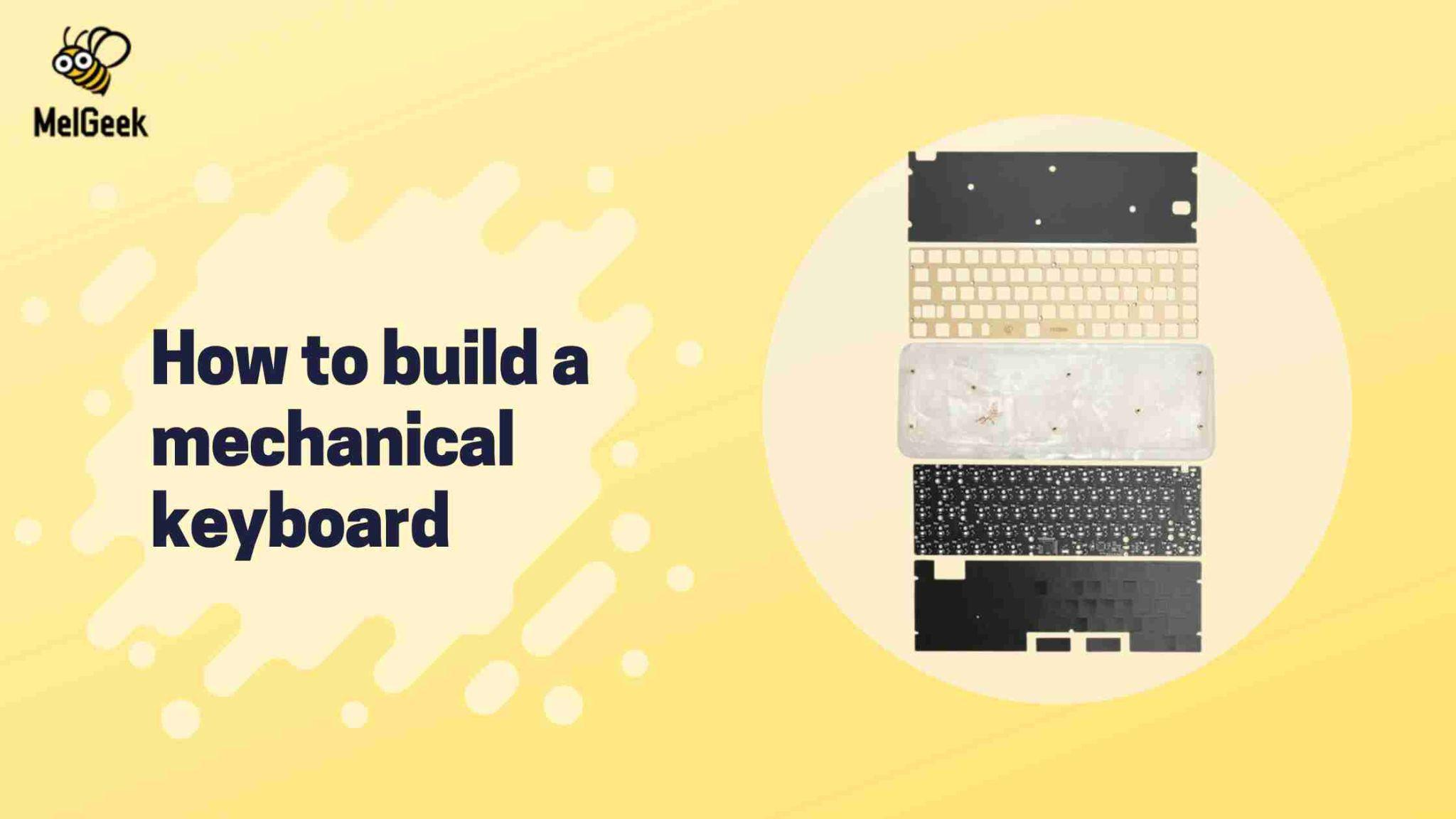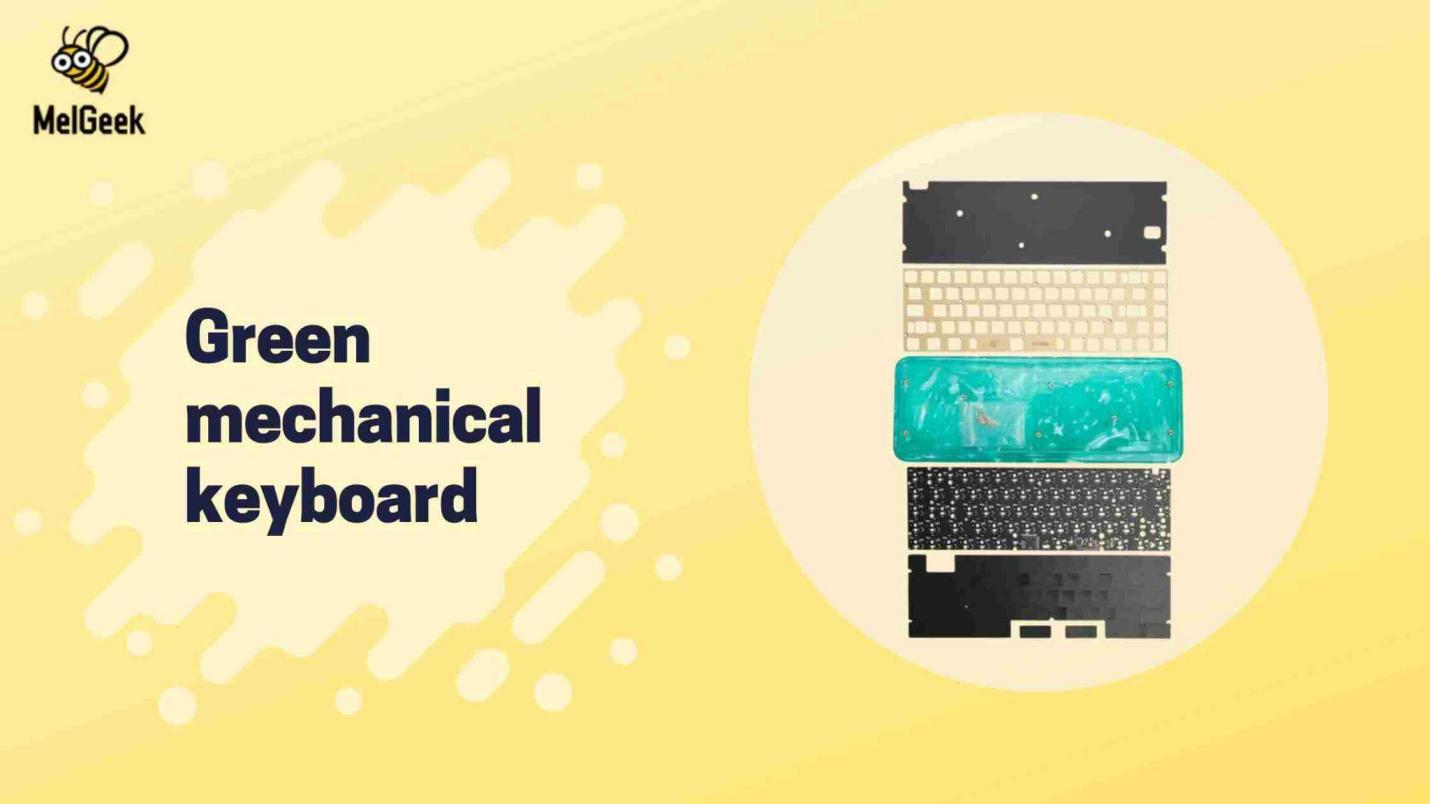Unveiling the Charm of Wooden Mechanical Keyboards

In the realm of computer peripherals, the keyboard is a bridge between human thought and digital expression. Among the various types available, wooden mechanical keyboards have carved a niche for themselves, blending traditional craftsmanship with modern technology. This fusion not only enhances the tactile experience of typing but also brings an element of nature to our digital lives. Let's delve into what makes wooden mechanical keyboards a special addition to any desk setup.
Understanding Wooden Mechanical Keyboards
Wooden mechanical keyboards are more than just input devices; they are a statement of style, sustainability, and personal preference. Their unique construction and design set them apart from their plastic counterparts, offering users a distinct typing experience that is both aesthetically pleasing and environmentally friendly.
The Anatomy of a Wooden Mechanical Keyboard
Key Components and Their Functions
A wooden mechanical keyboard consists of several key components: the keycaps, switches, PCB (printed circuit board), plate, and the wooden frame or case. Each part plays a crucial role in the keyboard's functionality and performance. The keycaps are the surface you touch; beneath them are the switches, which register keystrokes when pressed. The PCB is the brain of the keyboard, processing each keystroke, while the plate provides stability to the switches. Encasing all these components is the wooden frame, which not only protects the internals but also adds a natural aesthetic to the keyboard.
Wooden Frame: Types of Wood and Craftsmanship
The choice of wood and the craftsmanship involved in creating the frame significantly influence the keyboard's look and feel. Common woods include walnut, bamboo, and cherry, each offering different textures, colors, and durability. Artisans may carve, sand, and finish these woods by hand or with precision machines, ensuring each keyboard is unique. The type of wood and the quality of craftsmanship contribute to the keyboard's tactile feel, acoustic properties, and overall durability.
The Mechanical Switches: Heartbeat of the Keyboard
Exploring Different Types of Switches
Mechanical switches are at the heart of what makes a keyboard mechanical. They come in various types, categorized mainly by their actuation force, travel distance, and feedback type — tactile, linear, or clicky. Tactile switches provide a noticeable bump when pressed, clicky switches offer both a tactile bump and an audible click, while linear switches offer a smooth keystroke without feedback. The choice of switch affects the typing sound, feel, and even speed, making it a personal preference based on the user's typing habits.
How Switches Define Your Typing Experience
The switches are crucial in defining your typing experience, affecting accuracy, comfort, and satisfaction. A well-chosen switch can reduce typing fatigue, increase speed, and even make typing more enjoyable. Each switch type offers a different feedback and sound profile, allowing users to customize their typing experience to their liking.
Aesthetic and Environmental Considerations

The Environmental Benefits of Choosing Wooden Keyboards
Wooden mechanical keyboards offer environmental benefits over their plastic counterparts. Wood is a renewable resource, and when sourced responsibly, it can be an eco-friendly alternative. Additionally, wooden keyboards are durable and long-lasting, reducing waste from frequently replaced peripherals.
Wooden Keyboard Designs: From Minimalist to Intricate
The design of wooden mechanical keyboards can range from minimalist and sleek to intricate and ornate. Some feature simple, clean lines that highlight the natural beauty of the wood, while others may include elaborate carvings or inlays that showcase the artisan's skill. This variety ensures that there is a wooden keyboard to match any desk setup or personal style preference.
Why Choose a Wooden Mechanical Keyboard?
The resurgence of mechanical keyboards has brought with it an appreciation for not just functionality, but also the aesthetic and tactile pleasure of using a well-crafted keyboard. Wooden mechanical keyboards elevate this experience further, offering unique benefits that set them apart from their plastic counterparts. Here’s why a wooden mechanical keyboard might just be the perfect addition to your setup.
The Typing Experience
The Tactile Feedback and Acoustic Difference
Wooden mechanical keyboards offer a distinctive typing experience characterized by their tactile feedback and unique acoustic properties. The natural material of the wood combined with mechanical switches creates a sound profile that is softer and more resonant compared to the sometimes harsh clack of plastic keyboards. This can make for a more pleasant auditory experience, especially for those who type for extended periods.
Comparing Wooden vs. Traditional Plastic Keyboards
When comparing wooden to traditional plastic keyboards, the most noticeable difference lies in the feel and sound of typing. Wood absorbs some of the vibrations, leading to a quieter typing experience. Moreover, the warmth and natural texture of wood provide a more organic touch compared to cold plastic, enhancing the overall tactile feedback.
Durability and Longevity
The Lifespan of Wooden Keyboards Compared to Others
Wooden mechanical keyboards are often praised for their durability and longevity. Wood, as a material, is inherently robust and can withstand the rigors of daily use better than many plastics. With proper care, a wooden keyboard can last for many years, possibly outliving several cycles of traditional keyboards, which can succumb to wear and tear more readily.
Maintenance Tips for Wooden Mechanical Keyboards
To ensure the longevity of a wooden mechanical keyboard, a few maintenance tips can be helpful:
Avoid Direct Sunlight: Continuous exposure can cause the wood to fade or warp.
Regular Cleaning: Use a soft, dry cloth to dust the wooden parts. For the keycaps and switches, a slightly damp cloth with mild soap can be used, ensuring no liquid seeps into the electronic components.
Oil Treatment: Occasionally treating the wood with a natural oil can help maintain its moisture and prevent cracking.
Customization and Personalization

Customizing Your Wooden Keyboard: Options and Ideas
One of the joys of owning a wooden mechanical keyboard is the vast potential for customization and personalization. From choosing the type of wood and finish to selecting the keycap material and design, the options are nearly endless. Engravings and inlays can add a personal touch, while custom layouts can tailor the keyboard to specific typing needs or preferences.
Unique Artisans and Creators in the Wooden Keyboard Community
The wooden keyboard community is teeming with talented artisans and creators who bring a personal touch to every piece. These craftsmen often offer bespoke services, allowing for a level of customization rarely found in mass-produced keyboards. From hand-carved designs to custom-fitted wooden cases for specific keyboard models, the creativity and passion of these artisans are what make the wooden keyboard community truly special.
Integrating Wooden Mechanical Keyboards into Your Life
Wooden mechanical keyboards have transcended the boundaries of mere input devices to become a lifestyle choice for various communities, from gamers to professionals and DIY enthusiasts. Their unique appeal lies not just in their aesthetic beauty but also in the distinctive tactile experience they provide. Let's explore how wooden mechanical keyboards integrate into different lifestyles and the benefits they bring.
For the Gaming Community
Benefits of Wooden Mechanical Keyboards for Gamers
Gamers often seek keyboards that can offer both precision and durability to handle intense gaming sessions. Wooden mechanical keyboards fit this bill perfectly, providing a level of responsiveness and durability that can enhance gaming performance. The unique acoustic feedback of wooden keyboards also adds a layer of satisfaction to the gaming experience, while their aesthetic appeal can complement any gaming setup.
Popular Wooden Mechanical Keyboard Models Among Gamers
Several wooden mechanical keyboard models have gained popularity in the gaming community for their reliability and distinctive feel. Models featuring hot-swappable switches are particularly appreciated, allowing gamers to customize their tactile feedback and actuation force to suit their gaming style. Keyboards with programmable RGB lighting also find favor, as they can be customized to match the gamer's setup or mood.
For Writers and Professionals
Why Writers and Professionals Prefer Wooden Mechanical Keyboards
Writers and professionals who spend hours typing everyday value comfort and ergonomics, which wooden mechanical keyboards provide. The natural warmth and texture of wood, combined with the customizable typing experience offered by mechanical switches, can reduce fatigue and make long typing sessions more comfortable. Moreover, the aesthetic elegance of a wooden keyboard can enhance the workspace, making it more inviting and inspiring.
Ergonomics and Health Benefits
Ergonomics plays a crucial role in the design of wooden mechanical keyboards, with many models featuring angled designs or wrist rests to promote a healthy typing posture. The tactile feedback from the switches can also reduce the need to press the keys hard, minimizing strain on the fingers and wrists. These features contribute to a healthier typing experience, reducing the risk of repetitive strain injuries.
The DIY Scene: Building Your Own
A Step-by-Step Guide to Making a Wooden Mechanical Keyboard
- Design Your Keyboard: Start with a design that suits your needs. Decide on the layout, size, and the type of wood you want to use.
- Gather Materials: You'll need a wooden frame, mechanical switches, keycaps, a PCB, stabilizers, and any other components specific to your design.
- Cut and Prepare the Wooden Frame: Depending on your woodworking skills, you can handcraft the frame or use CNC machining. Ensure the dimensions fit your chosen components.
- Assemble the Internal Components: Install the PCB, switches, and stabilizers into the frame. Soldering may be required for the switches and PCB.
- Install the Keycaps: Once the internal components are in place, attach the keycaps to the switches.
- Test and Customize: Connect your keyboard to a computer to test each key. Customize the key mappings and lighting (if available) to your preference.
Tools, Resources, and Communities for DIY Enthusiasts
Building a wooden mechanical keyboard requires specific tools, including a soldering iron, screwdrivers, and potentially woodworking tools, depending on the complexity of your design. Online communities such as Reddit's r/MechanicalKeyboards and dedicated forums offer invaluable resources, advice, and inspiration. Additionally, websites like GitHub and Instructables can provide detailed plans and tutorials to help you through the process.
Integrating a wooden mechanical keyboard into your life, whether you're a gamer, a writer, a professional, or a DIY enthusiast, not only enhances your typing experience but also brings a piece of art into your daily routine. The combination of functionality, beauty, and the satisfaction of using something crafted from natural materials makes wooden mechanical keyboards a cherished choice for many.
FAQs
What are the best types of wood for mechanical keyboards?
The ideal woods for mechanical keyboards are those that offer durability, aesthetic appeal, and good acoustic properties. Popular choices include:
Walnut: Durable and rich in color, walnut provides a premium look.
Maple: Known for its light color and smooth grain, it offers a sleek appearance.
Cherry: Cherished for its fine grain and red hue, which deepens over time.
Bamboo: Sustainable and sturdy, with a distinctive appearance.
Mahogany: Offers resistance to warping and a classic reddish-brown color that enriches with age.
These woods are favored for their unique blends of physical characteristics and visual appeal.
How do I maintain and clean my wooden mechanical keyboard?
Maintaining and cleaning your wooden mechanical keyboard involves a few key steps:
Dusting: Regularly dust with a soft cloth or compressed air.
Cleaning the Wood: Use a slightly damp cloth with mild cleaner for the wooden parts, avoiding excess moisture.
Oil Treatment: Apply natural oils like linseed or teak oil occasionally to preserve the wood's appearance.
Keycap Cleaning: Detach keycaps for cleaning with warm, soapy water, ensuring they're dry before reassembly.
Proper maintenance ensures the longevity and beauty of your keyboard.
Can I replace the switches on my wooden mechanical keyboard?
Yes, you can replace the switches on many wooden mechanical keyboards. If the keyboard supports hot-swapping, you can easily customize the typing experience without soldering. For keyboards without hot-swap capabilities, switch replacement might require desoldering and soldering, potentially needing professional assistance.
Are wooden mechanical keyboards suitable for all typing speeds?
Wooden mechanical keyboards cater to typists of all speeds, with the key factor being the choice of switch type. Whether you prefer tactile, clicky, or linear switches, you can find a setup that supports both rapid typing and more measured keystrokes, making these keyboards versatile for various users.
Where can I find community support for wooden mechanical keyboard enthusiasts?
Community support for wooden mechanical keyboard enthusiasts is abundant in several places:
Reddit: Join subreddits like r/MechanicalKeyboards for discussions and advice.
Discord: Participate in dedicated Discord servers for real-time conversations.
Forums: Engage with forums on Geekhack and Deskthority for in-depth discussions.
Social Media: Explore hashtags like #MechanicalKeyboards on Instagram and Twitter for inspiration and tips.
These communities are valuable resources for sharing knowledge, seeking advice, and connecting with others who share your interest in wooden mechanical keyboards.
Unveiling the Charm of Wooden Mechanical Keyboards
In the realm of computer peripherals, the keyboard is a bridge between human thought and digital expression. Among the various types available, wooden mechanical keyboards have carved a niche for themselves, blending traditional craftsmanship with modern technology. This fusion not only enhances the tactile experience of typing but also brings an element of nature to our digital lives. Let's delve into what makes wooden mechanical keyboards a special addition to any desk setup.
Understanding Wooden Mechanical Keyboards
Wooden mechanical keyboards are more than just input devices; they are a statement of style, sustainability, and personal preference. Their unique construction and design set them apart from their plastic counterparts, offering users a distinct typing experience that is both aesthetically pleasing and environmentally friendly.
The Anatomy of a Wooden Mechanical Keyboard
Key Components and Their Functions
A wooden mechanical keyboard consists of several key components: the keycaps, switches, PCB (printed circuit board), plate, and the wooden frame or case. Each part plays a crucial role in the keyboard's functionality and performance. The keycaps are the surface you touch; beneath them are the switches, which register keystrokes when pressed. The PCB is the brain of the keyboard, processing each keystroke, while the plate provides stability to the switches. Encasing all these components is the wooden frame, which not only protects the internals but also adds a natural aesthetic to the keyboard.
Wooden Frame: Types of Wood and Craftsmanship
The choice of wood and the craftsmanship involved in creating the frame significantly influence the keyboard's look and feel. Common woods include walnut, bamboo, and cherry, each offering different textures, colors, and durability. Artisans may carve, sand, and finish these woods by hand or with precision machines, ensuring each keyboard is unique. The type of wood and the quality of craftsmanship contribute to the keyboard's tactile feel, acoustic properties, and overall durability.
The Mechanical Switches: Heartbeat of the Keyboard
Exploring Different Types of Switches
Mechanical switches are at the heart of what makes a keyboard mechanical. They come in various types, categorized mainly by their actuation force, travel distance, and feedback type — tactile, linear, or clicky. Tactile switches provide a noticeable bump when pressed, clicky switches offer both a tactile bump and an audible click, while linear switches offer a smooth keystroke without feedback. The choice of switch affects the typing sound, feel, and even speed, making it a personal preference based on the user's typing habits.
How Switches Define Your Typing Experience
The switches are crucial in defining your typing experience, affecting accuracy, comfort, and satisfaction. A well-chosen switch can reduce typing fatigue, increase speed, and even make typing more enjoyable. Each switch type offers a different feedback and sound profile, allowing users to customize their typing experience to their liking.
Aesthetic and Environmental Considerations
The Environmental Benefits of Choosing Wooden Keyboards
Wooden mechanical keyboards offer environmental benefits over their plastic counterparts. Wood is a renewable resource, and when sourced responsibly, it can be an eco-friendly alternative. Additionally, wooden keyboards are durable and long-lasting, reducing waste from frequently replaced peripherals.
Wooden Keyboard Designs: From Minimalist to Intricate
The design of wooden mechanical keyboards can range from minimalist and sleek to intricate and ornate. Some feature simple, clean lines that highlight the natural beauty of the wood, while others may include elaborate carvings or inlays that showcase the artisan's skill. This variety ensures that there is a wooden keyboard to match any desk setup or personal style preference.
Why Choose a Wooden Mechanical Keyboard?
The resurgence of mechanical keyboards has brought with it an appreciation for not just functionality, but also the aesthetic and tactile pleasure of using a well-crafted keyboard. Wooden mechanical keyboards elevate this experience further, offering unique benefits that set them apart from their plastic counterparts. Here’s why a wooden mechanical keyboard might just be the perfect addition to your setup.
The Typing Experience
The Tactile Feedback and Acoustic Difference
Wooden mechanical keyboards offer a distinctive typing experience characterized by their tactile feedback and unique acoustic properties. The natural material of the wood combined with mechanical switches creates a sound profile that is softer and more resonant compared to the sometimes harsh clack of plastic keyboards. This can make for a more pleasant auditory experience, especially for those who type for extended periods.
Comparing Wooden vs. Traditional Plastic Keyboards
When comparing wooden to traditional plastic keyboards, the most noticeable difference lies in the feel and sound of typing. Wood absorbs some of the vibrations, leading to a quieter typing experience. Moreover, the warmth and natural texture of wood provide a more organic touch compared to cold plastic, enhancing the overall tactile feedback.
Durability and Longevity
The Lifespan of Wooden Keyboards Compared to Others
Wooden mechanical keyboards are often praised for their durability and longevity. Wood, as a material, is inherently robust and can withstand the rigors of daily use better than many plastics. With proper care, a wooden keyboard can last for many years, possibly outliving several cycles of traditional keyboards, which can succumb to wear and tear more readily.
Maintenance Tips for Wooden Mechanical Keyboards
To ensure the longevity of a wooden mechanical keyboard, a few maintenance tips can be helpful:
Avoid Direct Sunlight: Continuous exposure can cause the wood to fade or warp.
Regular Cleaning: Use a soft, dry cloth to dust the wooden parts. For the keycaps and switches, a slightly damp cloth with mild soap can be used, ensuring no liquid seeps into the electronic components.
Oil Treatment: Occasionally treating the wood with a natural oil can help maintain its moisture and prevent cracking.
Customization and Personalization
Customizing Your Wooden Keyboard: Options and Ideas
One of the joys of owning a wooden mechanical keyboard is the vast potential for customization and personalization. From choosing the type of wood and finish to selecting the keycap material and design, the options are nearly endless. Engravings and inlays can add a personal touch, while custom layouts can tailor the keyboard to specific typing needs or preferences.
Unique Artisans and Creators in the Wooden Keyboard Community
The wooden keyboard community is teeming with talented artisans and creators who bring a personal touch to every piece. These craftsmen often offer bespoke services, allowing for a level of customization rarely found in mass-produced keyboards. From hand-carved designs to custom-fitted wooden cases for specific keyboard models, the creativity and passion of these artisans are what make the wooden keyboard community truly special.
Integrating Wooden Mechanical Keyboards into Your Life
Wooden mechanical keyboards have transcended the boundaries of mere input devices to become a lifestyle choice for various communities, from gamers to professionals and DIY enthusiasts. Their unique appeal lies not just in their aesthetic beauty but also in the distinctive tactile experience they provide. Let's explore how wooden mechanical keyboards integrate into different lifestyles and the benefits they bring.
For the Gaming Community
Benefits of Wooden Mechanical Keyboards for Gamers
Gamers often seek keyboards that can offer both precision and durability to handle intense gaming sessions. Wooden mechanical keyboards fit this bill perfectly, providing a level of responsiveness and durability that can enhance gaming performance. The unique acoustic feedback of wooden keyboards also adds a layer of satisfaction to the gaming experience, while their aesthetic appeal can complement any gaming setup.
Popular Wooden Mechanical Keyboard Models Among Gamers
Several wooden mechanical keyboard models have gained popularity in the gaming community for their reliability and distinctive feel. Models featuring hot-swappable switches are particularly appreciated, allowing gamers to customize their tactile feedback and actuation force to suit their gaming style. Keyboards with programmable RGB lighting also find favor, as they can be customized to match the gamer's setup or mood.
For Writers and Professionals
Why Writers and Professionals Prefer Wooden Mechanical Keyboards
Writers and professionals who spend hours typing everyday value comfort and ergonomics, which wooden mechanical keyboards provide. The natural warmth and texture of wood, combined with the customizable typing experience offered by mechanical switches, can reduce fatigue and make long typing sessions more comfortable. Moreover, the aesthetic elegance of a wooden keyboard can enhance the workspace, making it more inviting and inspiring.
Ergonomics and Health Benefits
Ergonomics plays a crucial role in the design of wooden mechanical keyboards, with many models featuring angled designs or wrist rests to promote a healthy typing posture. The tactile feedback from the switches can also reduce the need to press the keys hard, minimizing strain on the fingers and wrists. These features contribute to a healthier typing experience, reducing the risk of repetitive strain injuries.
The DIY Scene: Building Your Own
A Step-by-Step Guide to Making a Wooden Mechanical Keyboard
- Design Your Keyboard: Start with a design that suits your needs. Decide on the layout, size, and the type of wood you want to use.
- Gather Materials: You'll need a wooden frame, mechanical switches, keycaps, a PCB, stabilizers, and any other components specific to your design.
- Cut and Prepare the Wooden Frame: Depending on your woodworking skills, you can handcraft the frame or use CNC machining. Ensure the dimensions fit your chosen components.
- Assemble the Internal Components: Install the PCB, switches, and stabilizers into the frame. Soldering may be required for the switches and PCB.
- Install the Keycaps: Once the internal components are in place, attach the keycaps to the switches.
- Test and Customize: Connect your keyboard to a computer to test each key. Customize the key mappings and lighting (if available) to your preference.
Tools, Resources, and Communities for DIY Enthusiasts
Building a wooden mechanical keyboard requires specific tools, including a soldering iron, screwdrivers, and potentially woodworking tools, depending on the complexity of your design. Online communities such as Reddit's r/MechanicalKeyboards and dedicated forums offer invaluable resources, advice, and inspiration. Additionally, websites like GitHub and Instructables can provide detailed plans and tutorials to help you through the process.
Integrating a wooden mechanical keyboard into your life, whether you're a gamer, a writer, a professional, or a DIY enthusiast, not only enhances your typing experience but also brings a piece of art into your daily routine. The combination of functionality, beauty, and the satisfaction of using something crafted from natural materials makes wooden mechanical keyboards a cherished choice for many.
FAQs
What are the best types of wood for mechanical keyboards?
The ideal woods for mechanical keyboards are those that offer durability, aesthetic appeal, and good acoustic properties. Popular choices include:
Walnut: Durable and rich in color, walnut provides a premium look.
Maple: Known for its light color and smooth grain, it offers a sleek appearance.
Cherry: Cherished for its fine grain and red hue, which deepens over time.
Bamboo: Sustainable and sturdy, with a distinctive appearance.
Mahogany: Offers resistance to warping and a classic reddish-brown color that enriches with age.
These woods are favored for their unique blends of physical characteristics and visual appeal.
How do I maintain and clean my wooden mechanical keyboard?
Maintaining and cleaning your wooden mechanical keyboard involves a few key steps:
Dusting: Regularly dust with a soft cloth or compressed air.
Cleaning the Wood: Use a slightly damp cloth with mild cleaner for the wooden parts, avoiding excess moisture.
Oil Treatment: Apply natural oils like linseed or teak oil occasionally to preserve the wood's appearance.
Keycap Cleaning: Detach keycaps for cleaning with warm, soapy water, ensuring they're dry before reassembly.
Proper maintenance ensures the longevity and beauty of your keyboard.
Can I replace the switches on my wooden mechanical keyboard?
Yes, you can replace the switches on many wooden mechanical keyboards. If the keyboard supports hot-swapping, you can easily customize the typing experience without soldering. For keyboards without hot-swap capabilities, switch replacement might require desoldering and soldering, potentially needing professional assistance.
Are wooden mechanical keyboards suitable for all typing speeds?
Wooden mechanical keyboards cater to typists of all speeds, with the key factor being the choice of switch type. Whether you prefer tactile, clicky, or linear switches, you can find a setup that supports both rapid typing and more measured keystrokes, making these keyboards versatile for various users.
Where can I find community support for wooden mechanical keyboard enthusiasts?
Community support for wooden mechanical keyboard enthusiasts is abundant in several places:
Reddit: Join subreddits like r/MechanicalKeyboards for discussions and advice.
Discord: Participate in dedicated Discord servers for real-time conversations.
Forums: Engage with forums on Geekhack and Deskthority for in-depth discussions.
Social Media: Explore hashtags like #MechanicalKeyboards on Instagram and Twitter for inspiration and tips.
These communities are valuable resources for sharing knowledge, seeking advice, and connecting with others who share your interest in wooden mechanical keyboards.







